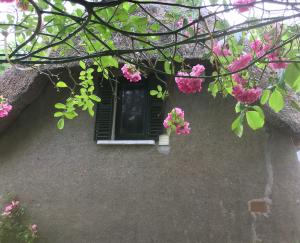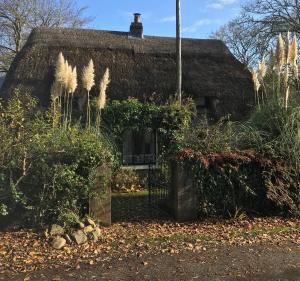The real problem behind Ireland’s fast disappearing thatch cottage heritage
The iconic Irish Thatch cottage is fast disappearing at a time when there is a huge housing shortage crisis in Ireland
The stone walled cottages tend to be found in the northern parts of Ireland and along the Wild Atlantic Way, while the mud-walled ones are mainly located in the southern parts of the country where stones are less plentiful.
Interestingly, provided the roofs are well maintained, both types of thatched cottages can, and do, last for centuries. However, if the roofs are neglected, even for a short period of time, water seeps through and the more vulnerable mud-walled constructions can very quickly get washed away. That’s why we have so few mud-walled thatch cottages left in Ireland nowadays.
In recent years local authorities and rural communities in the southern and eastern counties of Ireland have observed that many centuries old mud-walled Irish thatched cottages are being abandoned whci leads to them disintegrating, and disappearing.
It’s a real problem. And while the difficulty of insuring a thatched house is receiving much attention, both in the Irish Parliament and in the media nowadays, sadly this is only one part of a much larger problem of why Ireland's mud-walled thatch cottage heritage is disappearing so rapidly.
First off, global warming is playing an ever-increasing role in their disappearance.
The scorching hot spells of weather that Ireland experienced this summer caused many thatched roofs to shrink. This can result in the tightly secured thatch becoming loose on the roof. This needs to be attended to immediately because loose thatch is very vulnerable to wind and rain – especially those high winds and heavy rain like what the country has experienced this autumn.
If a mud-walled thatch house is not occupied, or if it is abandoned, it’s only a matter of time before the wind and rain inevitably will damage the roof and water will seep through and weaken its centuries-old mud walls beyond repair.
This weather erosion cycle from 'dwelling house to dust' can be as short as ten years. And the reason why so many centuries-old mud walled thatched cottages are disappearing in recent times can be summed up as follows:
• The house belongs to elderly 'empty nesters' whose children have moved away from their parents’ home. The elderly parents are happy and comfortable in their house and live in it, possibly on their state pension and with occasional support from their children.
• The parents die, or move into an old-folks’ home and the house is vacant and the roof is not maintained.
• The children put it up for sale because they have neither the time nor money to repair the thatch.
• The house doesn't sell easily because a thatch roof needs immediate money spent on it and insurance is so difficult – or indeed, impossible - to get, and so on. Sometimes it will sell for the land alone that is attached to it and the empty house is simply left to disintegrate.
It's a logical cycle that is easy to understand and, experience shows that local authority thatch grants and whatever can do very little to stop it. That's because the real problem is that these houses need dwellers as well as money.
Something needs to be done urgently to protect them. But what can be done?
First off we need to acknowledge that the grant systems operating to date quite obviously don’t work very well for mud-walled thatch cottages, as the number of these thatched cottages being abandoned and left to ruin is rapidly increasing. This raises the all-important question: Could a vacant mud-walled thatched dwelling ever qualify for the government’s vacant homes plan?
Because if it could, it could make a very worthwhile contribution to both a homeless problem, an asylum seekers problem, a refugee problem, and a heritage protection problem at a very reasonable cost.
It could provide more housing for homeless families, pupils for local schools, employment to local thatchers in addition to enhancing the multi-million tourist attractions of The Norman Way, The Wild Atlantic Way and, indeed, all of Ireland.
It's a combined housing, heritage and tourism investment that is well worth looking into. It costs on average €2000 pa to keep the roof of a mud-walled thatched dwelling in very good order. And there’s no question about it, a well maintained mud-walled thatched cottage is a very cosy place to live in.
But we, as a country that promotes out thatch heritage as a tourist attraction worldwide, need to move fast. Otherwise, the winds and the rain will beat us to it and all we’ll have left to preserve of our very vulnerable mud-walled thatch heritage will be dust.
Robert Hayes-McCoy
Robert Hayes-McCoy
+353 85 150 3096
roberthayesmccoy@gmail.com
Visit us on social media:
Twitter
Legal Disclaimer:
EIN Presswire provides this news content "as is" without warranty of any kind. We do not accept any responsibility or liability for the accuracy, content, images, videos, licenses, completeness, legality, or reliability of the information contained in this article. If you have any complaints or copyright issues related to this article, kindly contact the author above.


